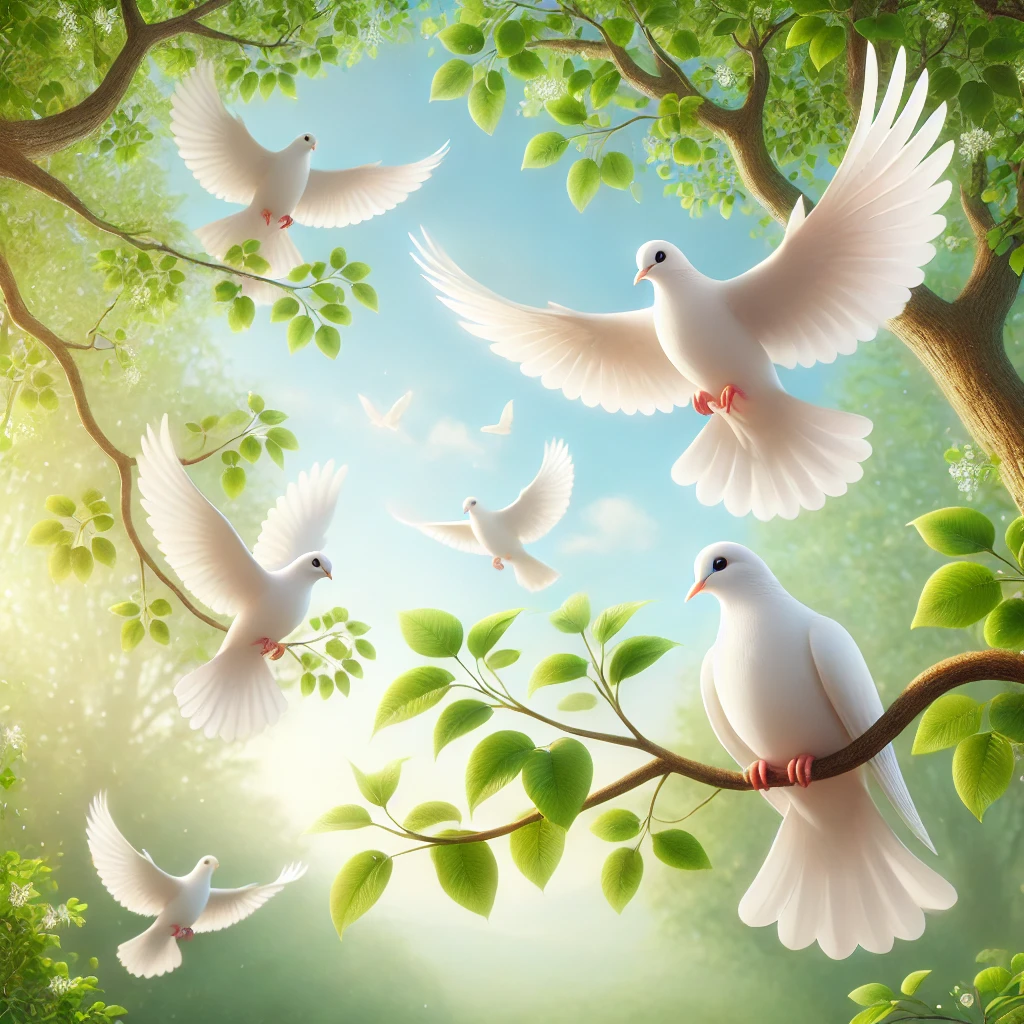White birds have captured human fascination for centuries. Their pristine feathers, graceful flight, and symbolic meanings make them subjects of art, literature, and culture. This article explores the beauty and significance of white birds, focusing on their species, symbolism, and role in human culture.
1. The Beauty of White Birds
White birds are admired for their pure and elegant appearance. Their feathers, free from the typical hues of other birds, stand out in nature. This section will delve into some of the most well-known white bird species, highlighting their unique characteristics.
1.1. The Majestic Swan
Swans are among the most iconic white birds. Known for their graceful movements and long necks, swans are often associated with beauty and elegance. The Mute Swan, native to Europe, is the most common species and is recognized by its orange beak and distinctive S-shaped neck. Swans are monogamous, forming strong pair bonds, which adds to their allure as symbols of love and fidelity.
1.2. The Elegant Egret
Egrets, with their slender bodies and long legs, are another captivating group of white birds. The Great Egret, found across the world, is renowned for its stunning plumage during the breeding season. Egrets are often seen wading in shallow waters, hunting for fish and insects. Their striking appearance and graceful stance make them a favorite subject for photographers and artists.
1.3. The Serene Dove
Doves, particularly the white dove, hold a special place in many cultures. They are symbols of peace, love, and purity. The white dove’s gentle demeanor and soothing cooing make it a symbol of calmness and hope. In many religious ceremonies and rituals, doves are released to symbolize the release of burdens and the beginning of new journeys.
2. Symbolism and Cultural Significance
White birds have been symbols in various cultures, representing purity, peace, and spirituality. Their symbolism often extends to religious beliefs, folklore, and art.
2.1. Religious Symbolism
In Christianity, white doves are associated with the Holy Spirit. They symbolize divine grace and purity, often appearing in depictions of the baptism of Jesus. In Hinduism, swans are considered sacred and are associated with the goddess Saraswati, the deity of wisdom, music, and arts. The swan’s ability to separate milk from water in Hindu mythology symbolizes discernment and knowledge.
2.2. Folklore and Myths
White birds appear in various myths and folklore. In Greek mythology, swans are linked to Apollo, the god of music and prophecy. They are believed to sing a beautiful song at the moment of death, known as the “swan song.” In many cultures, the appearance of a white bird is considered an omen, often signifying good fortune or divine intervention.
2.3. White Birds in Art and Literature
White birds have inspired countless works of art and literature. Their serene and graceful imagery has been a metaphor for beauty, peace, and purity. In literature, white birds often symbolize hope and transcendence. The poem “The Wild Swans at Coole” by W.B. Yeats reflects on the beauty and ephemeral nature of life through the image of swans.
3. The Role of White Birds in Ecology
White birds play crucial roles in their ecosystems. As predators, they help maintain the balance of aquatic and terrestrial habitats. For example, egrets control fish and insect populations in wetlands. As indicators of environmental health, the presence of white birds often signifies a thriving ecosystem.
3.1. Habitat and Distribution
White birds are found in various habitats, from wetlands and coastal regions to forests and grasslands. The adaptability of species like egrets and swans allows them to thrive in diverse environments. However, habitat loss and environmental degradation threaten many white bird populations.
3.2. Conservation Efforts
Efforts to protect white birds focus on habitat conservation and protection from poaching. Swans, for example, were once hunted for their feathers and meat. Conservation programs have helped restore their populations in many regions. Organizations like the Audubon Society and the International Crane Foundation work to protect habitats and raise awareness about the importance of white birds in ecosystems.
4. The Fascination with White Birds
The allure of white birds extends beyond their physical beauty. They embody a sense of mystery and ethereality, captivating the human imagination. This fascination has led to various cultural practices, such as bird watching and avian photography. White birds are often considered messengers of spiritual realms, inspiring a sense of wonder and curiosity.
4.1. White Birds in Popular Culture
White birds frequently appear in popular culture, from movies and music to fashion and design. The image of a white dove is synonymous with peace movements, while swans are often featured in ballet and dance, symbolizing grace and elegance. The use of white bird imagery in logos and branding reflects purity, sophistication, and luxury.
4.2. Personal Connections
For many, white birds hold personal significance. They may symbolize cherished memories, aspirations, or spiritual beliefs. The sight of a white bird can evoke feelings of peace and tranquility, providing comfort and solace. Bird enthusiasts often seek out white bird species for observation, drawn by their unique beauty and symbolism.
5. Conclusion
White birds, with their ethereal beauty and rich symbolism, continue to captivate and inspire. From the graceful swan to the serene dove, these birds are symbols of purity, peace, and elegance. They play vital roles in ecosystems and hold significant cultural importance. As we admire their beauty and learn from their symbolism, it is essential to protect and preserve these magnificent creatures for future generations. White birds remind us of the delicate balance of nature and the profound connections between all living beings.











Leave a Reply